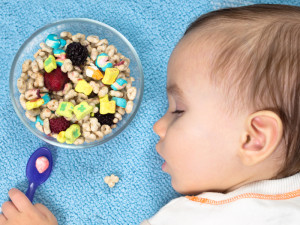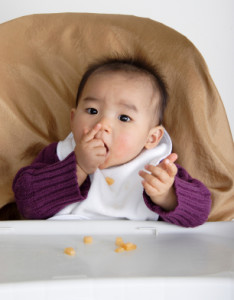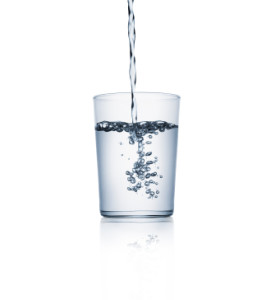How Much is Enough Food?
/ Rarely do I give a workshop on introducing solid foods to babies or feeding toddlers and preschoolers (including picky eaters) where a parent doesn’t ask how much food they should feed their child. It’s quite an easy question for me to answer. And, the answer applies to any meal or snack for a child of any age:
Rarely do I give a workshop on introducing solid foods to babies or feeding toddlers and preschoolers (including picky eaters) where a parent doesn’t ask how much food they should feed their child. It’s quite an easy question for me to answer. And, the answer applies to any meal or snack for a child of any age:
As much as they are hungry for.
If this answer surprises you, you’re not alone. This answer usually is met with confused faces. So, let me expand. As the adult, it’s your role to provide opportunities to eat 5 or 6 times a day. It’s your child’s role to choose how much to eat.
I recognize that it’s difficult to trust them to know how much to eat. But it really is best to do so.
We’re born being able to know when we are hungry and when we are satisfied. Over time, through social pressures, we learn to not listen to our bodies and instead look to external cues for how much to eat. This is associated with higher rates of eating disorders and obesity.
Studies show that when kids are raised in households where they’re told to stop eating before they’re satisfied (i.e. because the adult believes that their child has “had enough”), they learn to sneak food and gorge on food when they get the opportunity.
On the flip side, when kids are forced to eat more than they are hungry for, they learn to over-ride their bodies’ signals and they learn to overeat.
Instead, trust your child to listen to their bodies and eat as much as their bodies tell them. Expect this to vary from day-to-day. Some days they’ll eat so much that you don’t know where they’re putting it all. Other days they’ll eat so little that you won’t know where they’re getting their energy from. I recommend serving a very small portion. If kids want more, allow them to have seconds.
You’ll know that your child is getting enough to eat when they have lots of energy and their growth is tracking along their curve on their growth chart.













 Recently a parent asked me this question: “How much cow’s milk to offer toddlers. Do you allow them to regulate/drink as much as they want or just fill the cup up once and then when it's empty that's it? Being only 17 months, he can fill up pretty quick on milk during the meal, but I also don't want to be taking it away. I would prefer to just allow him to self regulate, but not sure what to do once the sippy cup is empty.”
Recently a parent asked me this question: “How much cow’s milk to offer toddlers. Do you allow them to regulate/drink as much as they want or just fill the cup up once and then when it's empty that's it? Being only 17 months, he can fill up pretty quick on milk during the meal, but I also don't want to be taking it away. I would prefer to just allow him to self regulate, but not sure what to do once the sippy cup is empty.”
 {
{
 I shared this post previously with the
I shared this post previously with the  {Guest post I contributed to the
{Guest post I contributed to the  Thank you to the parent at a recent workshop in Victoria BC who asked this baby feeding question: "What does it mean when I see whole pieces of food in my baby’s poop?" It’s amazing the topics of conversation that you have once becoming a parent, eh?!
This Mom had recently started feeding her baby finger foods and was seeing pieces of food in her baby’s diaper. It’s often not talked about, but when you start to feed your baby solid foods, you will see a change in their bowel movements.
Thank you to the parent at a recent workshop in Victoria BC who asked this baby feeding question: "What does it mean when I see whole pieces of food in my baby’s poop?" It’s amazing the topics of conversation that you have once becoming a parent, eh?!
This Mom had recently started feeding her baby finger foods and was seeing pieces of food in her baby’s diaper. It’s often not talked about, but when you start to feed your baby solid foods, you will see a change in their bowel movements. {Guest Post at
{Guest Post at  Thank you to the VIP who asked this question: "Does my 7 month old baby need water?". The short answer is: No. Seven month olds don’t
Thank you to the VIP who asked this question: "Does my 7 month old baby need water?". The short answer is: No. Seven month olds don’t